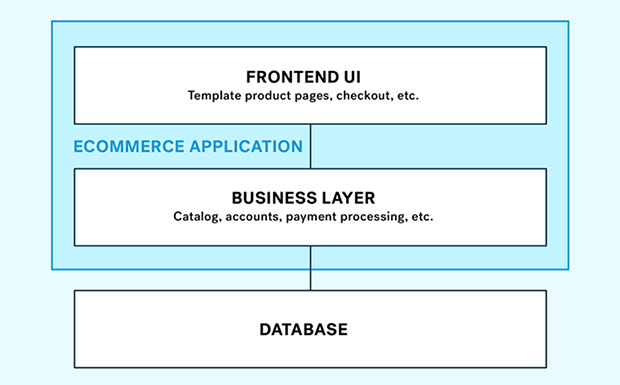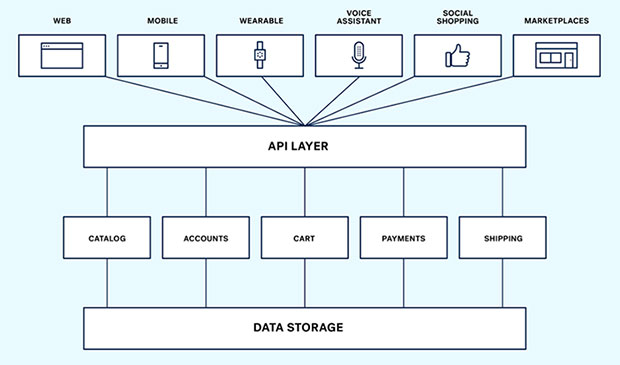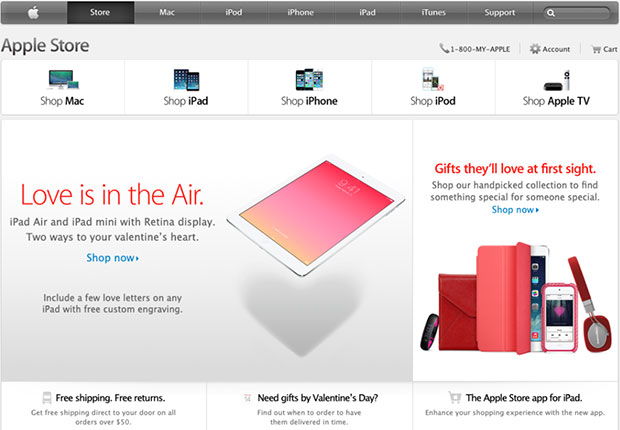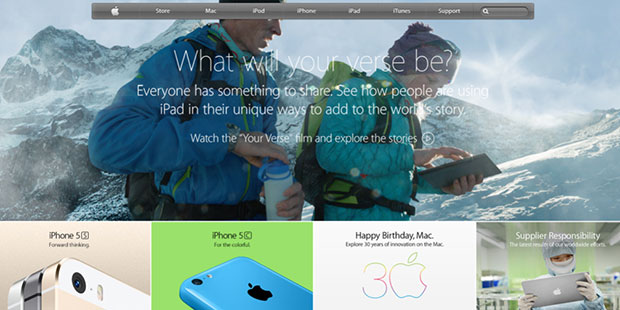The future is headless. As the world of commerce continues to mature, today’s most successful retailers have one thing in common: They’re getting better and better at meeting their customers whenever, wherever, and however they want to shop.
Whether they’re in a brick-and-mortar store, or using a desktop browser or mobile app, or tapping a commerce-enabled Instagram feed, shoppers expect brands to deliver convenience, ease of use, and an engaging shopping experience before they hand over their cash.
The number of possible commerce touchpoints has grown exponentially, which means having a holistic commerce mindset is critical for survival. So what do you, as a growing retailer or brand, need to know in order to succeed in this brave new world of unified commerce?
For one thing, you need to understand that the future of commerce is headless. You’re either moving toward a headless system or you’re falling behind.
What Does ‘Headless’ Mean, Anyway?
A headless system is simply one in which the front end, or content presentation layer, is decoupled from the back end business functions through some kind of application programming interface. That allows you to create any sort of front end customer-facing shopping experience you can imagine, as long as it’s able to connect to your API.
This model is a big shift from the early days of e-commerce, when many of the current market-leading platforms were created.
Back then, all e-commerce platforms were essentially monolithic applications with restrictive templated layouts for product pages, shopping carts and so on. That made sense at the time, since digital shopping was happening only in a Web browser on a desktop computer.

In a headless system the back end doesn’t know or care how the front end experience looks, sounds or behaves. As long as it’s getting the correct types of data passed back through the API, the back end can support any current or future front end experience.
The image below shows a simplified version of how a headless system is put together.

Why Headless Will Win
Today, commerce is connected, and shopping experiences are heavily customized and personalized. Desktop browsers are now just one channel for buying, and a shrinking one at that.
Decoupling the front end from the back end makes it possible for you to do the following:
1. Create content-rich shopping experiences
More immersive, engaging shopping experiences aren’t just aesthetically pleasing — they also lead to higher conversion rates and increased brand loyalty. Because of tech limitations, sites from the early days of e-commerce tended to separate experiential content sites (where shoppers could learn about your offerings) and transactional commerce sites and systems (where the actual buying took place). Typically they had different URLs.
For one obvious example, compare Apple’s shopping site “store.apple.com” from just a few years ago…

…with the more content-rich “www.apple.com” from that same year:

Most retailers had a similar arrangement and many still do. When you visit Apple’s website now, of course, content and transactions are much more seamlessly merged. That’s because putting a hard, bright line between the two just doesn’t work for today’s shoppers.
2. Stay ahead of your market
When we say “headless,” what we really mean is “multi-headed.” Desktop sites, mobile sites, third-party marketplaces (like Amazon), social commerce plugins — each category represents a different “head” where shoppers can interact with your brand. Each needs to be connected back to your business systems, with transactions and shopping data orchestrated and synchronized seamlessly via an API.
Now, new “heads” are popping up and gaining traction with shoppers all the time. Think back just five years ago: Would you have ever imagined that you’d be able to buy merchandise through your watch? Through a network-connected speaker? Or an Instagram post? Or directly through a YouTube video?
Try explaining Amazon Dash buttons to someone from the year 2001. The point is, commerce capabilities are advancing faster every year, and it’s impossible to predict where the next enticing customer channel will appear.
3. Develop and maintain systems more efficiently
When your front end and back end are decoupled, each team in your engineering group can just do what they’re good at. Front end developers don’t need special qualifications for your back end systems, and vice versa. As long as all groups are well-versed in your API schema and data structures, it’s much easier for each to stay focused on the part of the system they’re working on.
That allows your business to make rapid updates and changes to keep up with the pace of consumer technology without waiting for the (typically much slower) developments in back end systems. There’s no need for a full platform redeploy every time you want to run a coupon or marketing campaign, or make a quick update to support a new smartphone operating system, for instance.
Why Isn’t Everyone Doing It?
At this point you may be asking yourself, what’s the catch? If headless commerce is so great, why isn’t every retailer and brand making the switch? There are a few reasons why a commerce operation might not be ready to dive headlong into headless just yet.
For one thing, replatforming takes time and resources. Somewhat ironically, the more successful your current operation is, the harder it can be to sell decision-makers on the need to invest in it. Having a long-term vision for your future is a prerequisite, since the return on investment may not be apparent for months or even years.
It also can force some difficult changes to the composition of your team. You may need to hire some new staff whose skills match your new systems and new capabilities — and this can span functions in marketing, customer service, IT and across the business.
Removing the limitations of your legacy e-commerce platform can require a whole new way of thinking about your business, and it may take some time for established team members to adjust.
Ultimately, whether it’s now or a few years down the road, going headless isn’t just a nice-to-have option. It will be essential for your commerce survival. The future is headless — and the future is coming, whether we’re ready for it or not.







































